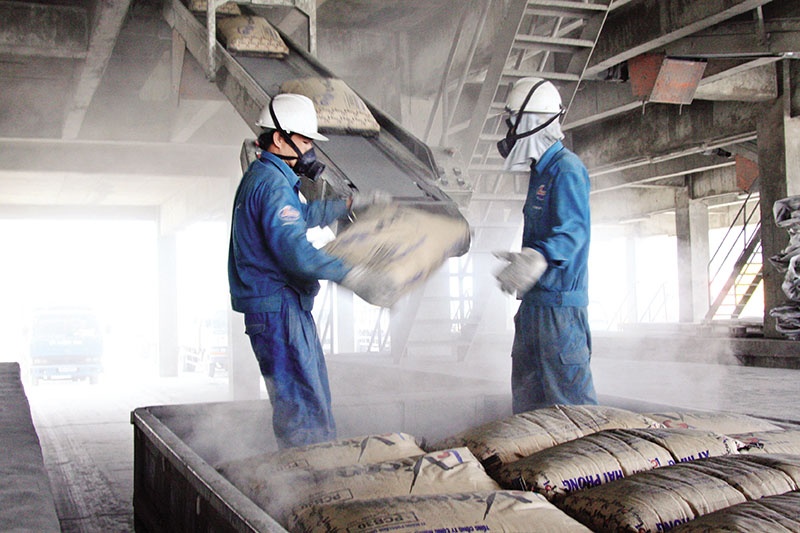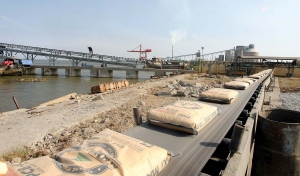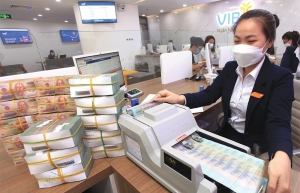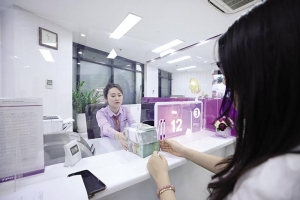Cement firms aspire for better performance following policy move
On August 26, Deputy Prime Minister Tran Hong Ha issued a directive outlining solutions to address challenges and promote the production and consumption of cement, steel, and other construction materials.
 |
The directive calls on authorised management agencies and sectors to closely observe practical conditions, improve institutional frameworks, and implement policies to support businesses in production and trade.
Other measures include increasing public investment, building transportation and irrigation infrastructure, and developing urban and rural infrastructure.
The directive also promotes the implementation of a project to build at least one million social housing units, bolstering the use of reinforced concrete viaducts in expressway projects, and prioritising investment in paved roads for rural and mountainous transport, particularly in difficult terrain.
Luong Duc Long, vice president and general secretary of the Vietnam National Cement Association (VNCA), noted, “The key is enhancing infrastructure and basic construction to boost cement consumption, providing output markets for manufacturers.”
Market signals in the second quarter (Q2) of 2024 were better than in Q1, helping local cement companies improve sales while cutting costs.
As a result, some companies were able to cut their losses, and a few have even reported profits. However, overall business efficiency remained low.
Bỉm Sơn Cement JSC, a member of state conglomerate Vietnam Cement Industry Corporation (Vicem), released its semi-annual financial report for 2024, showing net sales revenue reaching $71.25 million, down 1.7 per cent compared to the same period last year.
After deducting expenses, the company posted a $1.1 million profit in Q2 after many months counting losses.
For the first half of 2024, Vicem Bim Son recorded losses of over $940,000, signalling a remarkable improvement compared to the $2.3 million loss it incurred one year ago.
According to Vicem Bim Son's leadership, cement supply still far exceeds demand, leading to pressure from high inventories and excess capacity.
This situation has forced companies to engage in fierce competition, lowering prices, and launching new products to boost sales volume and expand market share.
The most notable improvement in business performance in Q2 was seen at Vicem Ha Tien JSC, which counted nearly $79.5 million in net revenue and more than $1.9 million in net profit during the period.
In H1, Vicem Ha Tien’s revenue amounted to $141.6 million, down 8 per cent, while net profit came to $875,000.
Compared to the company’s business results in Q1, with just $66 million in revenue and $1 million contraction, Vicem Ha Tien had made a remarkable turnaround.
The reason for this profitability was, however, not due to revenue recovery but a sharp reduction in interest expenses.
The company also managed to cut interest expenses to just $1.2 million in Q2 of this year, compared to $2.9 million one year ago.
These are just a few companies that have seen improved results, while most others in the sector are in the doldrums.
For example, Vicem But Son (BTS) reported a loss approximating $1.5 million in Q2. With no profit in both quarters, the company recorded a net loss surpassing $3.8 million in H1 of this year.
Meanwhile, Vicem Hai Van (HVX) posted $4.04 million in revenue in Q2, down 43 per cent on-year, marking its fifth consecutive loss-making quarter.
According to the company’s leadership, the primary reason for the profit decline was a decrease in cement sales volume of nearly 48,000 tonnes in Q2, with clinker sales declining by 27,800 tonnes, equal to a 31 per cent drop compared to the same period last year.
In H1, Vicem Hai Van's revenue fell 49 per cent on-year to $6.3 million, and incurred a $1.25 million contraction.
Weak demand and competition pressure both domestically and internationally continue to cast a shadow over the financial picture of cement companies.
According to statistics from 18 listed cement firms, in H1 of this year, these companies incurred a nearly $4.6 million contraction, 3.4 times higher than one year ago.
 | Seeking way out of cement oversupply Resuming the cement sector planning has been imperative to curb ever-increasing oversupply in the domestic market. |
 | Policies could pump in more credit in H2 Economic growth outlook for the last six months of the year and the influence of international geo-political developments prompt Vietnam to continue maintaining its monetary policy in a flexible manner to reduce lending rates for businesses. |
 | Rosier prospects for bank tickers in H2 The prospects of a credit rebound, easing bad debt threats, and better net interest margins should help banks to maintain profit growth this year. |
What the stars mean:
★ Poor ★ ★ Promising ★★★ Good ★★★★ Very good ★★★★★ Exceptional
Related Contents
Latest News
More News
- First members of Danang International Finance Centre revealed (December 22, 2025 | 17:39)
- Human-centred governance seen as key to AI development (December 19, 2025 | 18:19)
- Top 10 notable events of Vietnam’s industry and trade sector in 2025 (December 19, 2025 | 14:00)
- Tungsten surges to 12-year high as world enters a new 'black gold' race (December 18, 2025 | 17:27)
- Vietnam’s coffee exports set new record despite price pressures (December 18, 2025 | 17:13)
- Garment and textile sector seeks new growth after volatile year (December 18, 2025 | 17:01)
- VinSpeed and Siemens strengthen cooperation for high-speed rail development (December 18, 2025 | 16:53)
- High-tech adoption for TH true MILK (December 18, 2025 | 13:39)
- Takeda supports health resilience amid climate change challenges (December 18, 2025 | 12:39)
- Mondelez Kinh Do - a chapter of purpose-led leadership in Vietnam (December 18, 2025 | 09:44)

 Tag:
Tag:

























 Mobile Version
Mobile Version